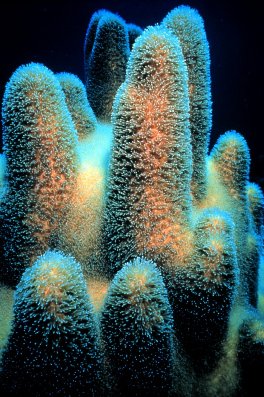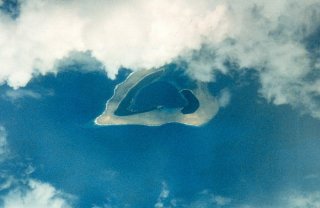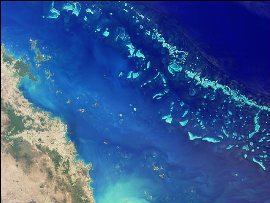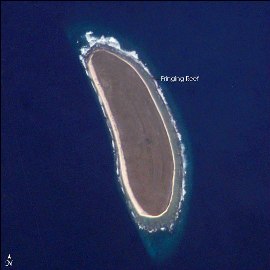ReefsCoral is a simple marine animal having a
small cylindrical sac-like body called a polyp and an
exoskeleton of calcium carbonate. As old colonies die new form on
top, ultimately forming limestone. There are an estimated 9 million
species making it one of the most diverse marine ecosystems. Corals
are on the decline in many regions due to human activity. Figure 21.22 Pillar coral Corals thrive in warm tropical water at depths of 10 - 55 m (30 - 18 ft) from about 30o N to 30o S. Warm, east coasts encourage their development while few are found in cooler, western coastal environments. Water temperatures range from 18o to 29o C (64o - 85o F) 27% to 40% salinity. Bleaching and death result when water temperatures rise to high. There are cool water corals found deep, dark ocean water at temperatures as low as 4o C (39o F). Corals also require sediment-free water thus few are found near the mouths of rivers discharging in the ocean. There are three kinds of coral reefs. Fringing reefs are platforms of coral attached to land. They tend to be wider where wave action is prominent and the water well aerated. Barrier reefs form offshore with lagoon in between. Many form along slowing subsiding islands, growing at a rate that keeps them near sea level. Others form on continental shelves. The largest and one of the most well known is the Great Barrier Reef of Australia at over 2025 km long ( 1260 m) and 16 - 145 km (10-90 mi) wide . Atolls are circular reefs enclosing a lagoon formed from the subsidence and disappearance of a volcanic island cone.
|



